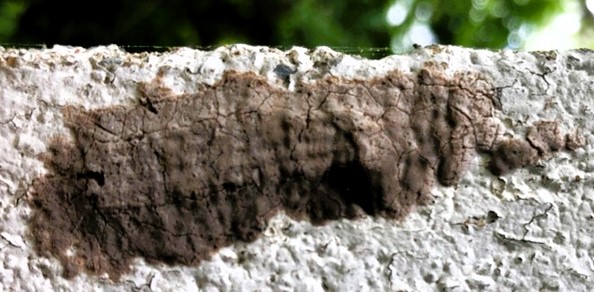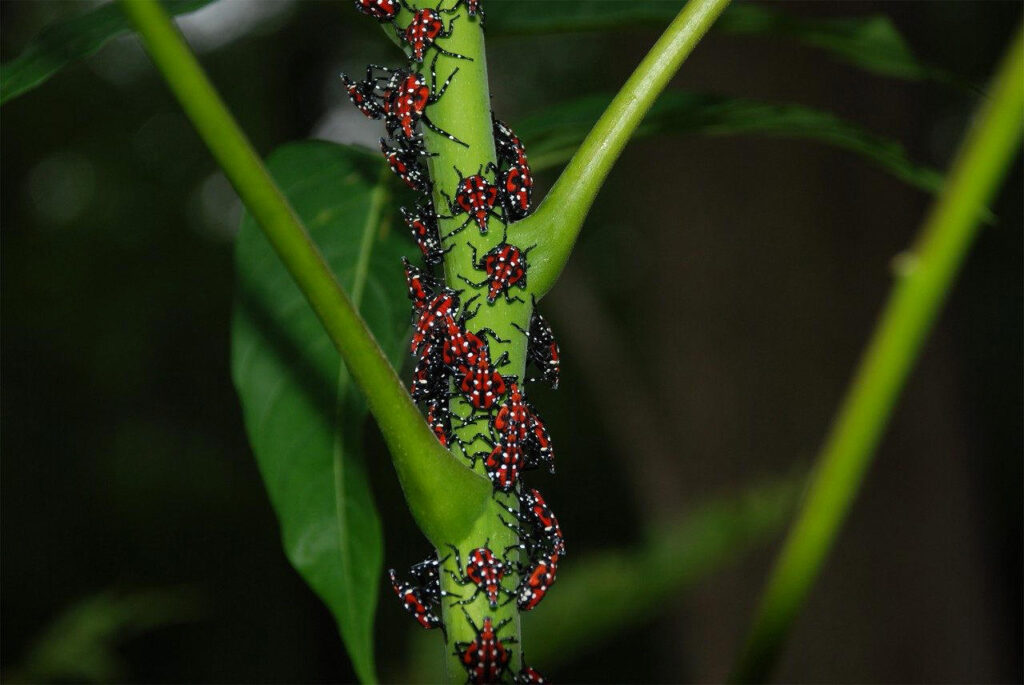Invasive spotted lanternflies should be reported and killed

Fairfax County residents are encouraged to report sightings of spotted lanternflies, invasive pests that are spreading throughout the area.
These dangerous beauties pose a significant threat to peach, apple, and grape growers, as well as homeowners’ yard plants.

The Urban Forest Management office asks residents to report spotted lanternfly sightings through the mobile app iNaturalist or by email to [email protected]. Include an address and photos.
Adult spotted lanternflies are approximately one inch long. They have gray forewings with black dots and hindwings with black spots on red patches and a white band.

Residents are urged to help curb the spread of these insects by stomping and killing the adults. Egg masses found on trees, yard objects, and vehicles should be scraped into a container and drowned in soapy water or rubbing alcohol and thrown out with the trash. Pesticides are unnecessary.
The egg masses are covered in a light gray colored wax that looks like mud when it dries.

Each egg mass contains about 50 lanternflies that will hatch next spring. Eggs can survive the winter and hatch if they are left on the ground.
Spotted lanternfly nymphs are currently moving into the adult phase of their life cycle, which lasts until November. Adults begin laying eggs in September and through the first few hard frosts.
The spotted lanternfly’s preferred host is the invasive Tree of Heaven. Fairfax County is removing these trees from county-owned property.


If you’ve ever had a cicada fly up and land on you, these guys are worse. But at least cicadas belong here and then the go away for 17 years…
Want makes them “worse.” I want to know just in case.
They’re not as cute, and they take off flying and will land on anything vertical, including a person sitting or standing there.
They decimate foliage- particularly in areas like vineyards. Pennsylvania has had a huge squash em out campaign over the last three years and it’s working.
The county needs to get the state to remove the trees along the highway. There are so many Tree of Heavens along the highways and streets. Start with Columbia Pike near the dam.
I agree – our house backs to the FFX County Pkwy and we have a wall in our backyard. The trees on the other side of the wall (county property) are NEVER maintained and have grown 10-15 feet above the wall with weeds, vines and English ivy that grows through the trees and over and under the wall and into our yard. We are constantly pulling the weeds, vines and ivy off the wall so that it doesn’t invade our yard. If these egg-mud masses grow on those trees, we will never see it but will get invaded by theses moths. UGH!
Trees have fallen on my property and Fairfax County refuses to reimburse me for my losses. It’s ridiculous how much we pay in property taxes and still have to deal with these issues!
Serious question. Is the land along Columbia Pike County-Owned land, State-Owned Land, or Privately Owned Land?
I gotta be honest. I have no confidence that the Trees of Heaven that apparently line Columbia Pike are going to be removed by anyone. Especially not Fairfax County.
If we’re being realistic, we should accept that spotted lanternflies are going to become well established in Fairfax County and find the best way to coexist with them.
Perhaps, just like cicadas, they are good sources of protein, and have a wonderful crunchy texture when stir fried.
Yummy!
One has to wonder why the county doesn’t use this program to start invasive plant removal. https://www.fairfaxcounty.gov/publicworks/operation-stream-shield If the Tree of Heaven is a problem, then so is the english ivy, bamboo and all of the other invasives that are destroying our forests.